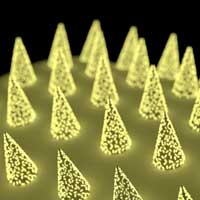 Researchers have developed a biosensing microneedle patch that can be applied to the skin, capture a biomarker of interest and, thanks to its unprecedented sensitivity, allow clinicians to detect its presence.
Researchers have developed a biosensing microneedle patch that can be applied to the skin, capture a biomarker of interest and, thanks to its unprecedented sensitivity, allow clinicians to detect its presence.
Friday, January 22, 2021
No more needles?
 Researchers have developed a biosensing microneedle patch that can be applied to the skin, capture a biomarker of interest and, thanks to its unprecedented sensitivity, allow clinicians to detect its presence.
Researchers have developed a biosensing microneedle patch that can be applied to the skin, capture a biomarker of interest and, thanks to its unprecedented sensitivity, allow clinicians to detect its presence.
New technique builds super-hard metals from nanoparticles
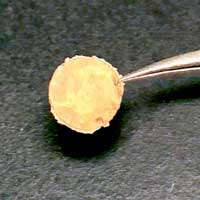 Researchers have shown a way to make bulk metals by smashing tiny metal nanoparticles together, which allows for customized grain structures and improved mechanical and other properties.
Researchers have shown a way to make bulk metals by smashing tiny metal nanoparticles together, which allows for customized grain structures and improved mechanical and other properties.
Researchers demonstrate molecularly woven fabric
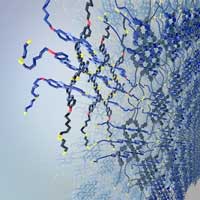 Researchers have developed a way to weave molecular threads in two-dimensional layers. In doing so they have produced a 2D-molecularly-woven fabric that has a thread count of 40-60 million (for comparison, the finest Egyptian linen has a thread count of around 1500 - thread count is the number of strands per inch).
Researchers have developed a way to weave molecular threads in two-dimensional layers. In doing so they have produced a 2D-molecularly-woven fabric that has a thread count of 40-60 million (for comparison, the finest Egyptian linen has a thread count of around 1500 - thread count is the number of strands per inch).
Crystal structures in super slow motion
 Physicists succeed in filming a phase transition with extremely high spatial and temporal resolution.
Physicists succeed in filming a phase transition with extremely high spatial and temporal resolution.
Enhancing hybrid flow batteries with graphene
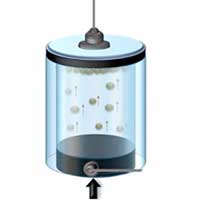 Scientists have found a way to enhance hybrid flow batteries and their commercial use. The new approach can store electricity in these batteries for very long durations for about a fifth the price of current technologies, with minimal location restraints and zero emissions.
Scientists have found a way to enhance hybrid flow batteries and their commercial use. The new approach can store electricity in these batteries for very long durations for about a fifth the price of current technologies, with minimal location restraints and zero emissions.
Bottom-up approach yields highly customizable bioelectronics
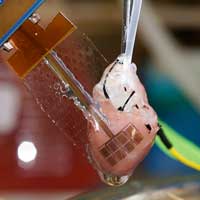 Researchers have designed a bottom-up approach to create carbon-based bioelectronics that could be used in medical research or for devices such as tissue stimulators to treat Parkinson's disease or cardiac problems.
Researchers have designed a bottom-up approach to create carbon-based bioelectronics that could be used in medical research or for devices such as tissue stimulators to treat Parkinson's disease or cardiac problems.
Targeted coating improves graphene oxide membranes for nanofiltration
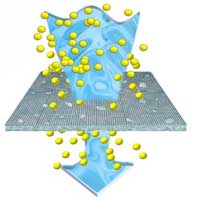 Researchers have developed a stable graphene oxide nanofiltration membrane with uniform pore size to remove organic micropollutants.
Researchers have developed a stable graphene oxide nanofiltration membrane with uniform pore size to remove organic micropollutants.
Researchers extend 4D printing to nanophotonics
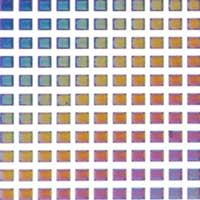 The newly developed shape memory polymer resist, which allows for high-resolution 4D printing, promises a platform for information hiding for optical anti-counterfeiting and tunable photonic devices.
The newly developed shape memory polymer resist, which allows for high-resolution 4D printing, promises a platform for information hiding for optical anti-counterfeiting and tunable photonic devices.
Bringing atoms to a standstill
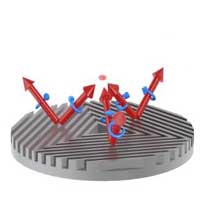 Scientists have miniaturized the optical components required to cool atoms down to a few thousandths of a degree above absolute zero, the first step in employing them on microchips to drive a new generation of super-accurate atomic clocks, enable navigation without GPS, and simulate quantum systems.
Scientists have miniaturized the optical components required to cool atoms down to a few thousandths of a degree above absolute zero, the first step in employing them on microchips to drive a new generation of super-accurate atomic clocks, enable navigation without GPS, and simulate quantum systems.
Single atoms as a catalyst: Surprising effects ensue
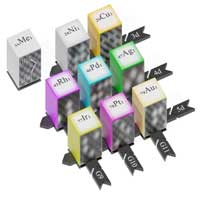 For years, the metal nanoparticles used in catalysts have been getting smaller and smaller. Now, a research team has shown that everything is suddenly different when you arrive at the smallest possible size: a single atom.
For years, the metal nanoparticles used in catalysts have been getting smaller and smaller. Now, a research team has shown that everything is suddenly different when you arrive at the smallest possible size: a single atom.
Enzyme-powered micromotors based on metal-organic porous materials
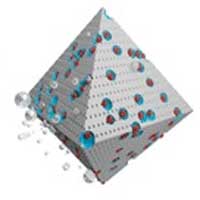 Researchers have successfully designed and fabricated bubble-propelled enzymatic micromotors built from a highly porous metal-organic framework (MOF). These new micromotors might lead to applications for drug delivery and adsorption of pollutants.
Researchers have successfully designed and fabricated bubble-propelled enzymatic micromotors built from a highly porous metal-organic framework (MOF). These new micromotors might lead to applications for drug delivery and adsorption of pollutants.
A new natural platform for realizing flat-band-based quantum phenomena and topological states
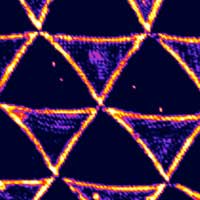 Researchers demonstrate that four-layer rhombohedral graphene is a new material for realizing flat-band-based quantum phenomena in a natural way.
Researchers demonstrate that four-layer rhombohedral graphene is a new material for realizing flat-band-based quantum phenomena in a natural way.
Highly functional membrane developed for producing freshwater from seawater
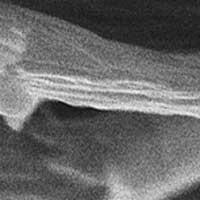 A desalination membrane laminated with nanosheets featuring 2D nanochannels.
A desalination membrane laminated with nanosheets featuring 2D nanochannels.
Squeezing a rock-star material could make it stable enough for solar cells
 A promising lead halide perovskite is great at converting sunlight to electricity, but it breaks down at room temperature. Now scientists have discovered how to stabilize it with pressure from a diamond anvil cell.
A promising lead halide perovskite is great at converting sunlight to electricity, but it breaks down at room temperature. Now scientists have discovered how to stabilize it with pressure from a diamond anvil cell.
Subscribe to:
Comments (Atom)
